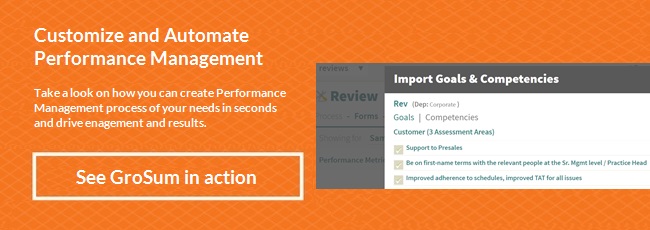
Goals and circumstances define how organizations will be using Performance Management, either decision making or Workforce Development. Before implementing a Performance Management System, if there is no clear call on its purpose, don’t be surprised if the process generates skepticism from employees, how much emotions are generated, and the high labor needed to get everyone on board.
Defining the Purpose of the Performance Management System
A majority of organizations are using Performance Management to make the decision-making process. These decisions include:
- Compensation increment
- Promotion and Transfer
- Assignment of new projects
- Reduction in workforce
Some other organizations are using Performance Management to focus on the employee development process. Organizations want to use performance evaluation as a guide to employee development. Neither of the two processes is a clear winner for the best use case. It’s up to the organization on how what fits them better.
Though the end result that everyone should be aiming is to drive bottom-line results.
Using Performance Management for Decision Making
When we mention decision making, it typically includes compensation increment, promotion, etc. You can use performance management for decision making if:
- Availability of significant and conditional rewards are given to an employee.
- Use performance management to drive to focus and drive significant and high results.
- A strong connection between rewards and performance.
Using Performance Management for Development Making
Though used by very few in number, performance management when used by companies to drive employee development and improve their career skills. You can select the same if your focus lies on:
- Salary increments are given on the basis of skill level and local market expectations
- Vision is to nurture employees and see them as a long-term vision.
Note: Both cases cannot be used together. If you plan a process which includes compensation and development talks together, then neither of the processes gets justified. For example, a discussion which included salary, bonus and performance discussions, starts with managers linking ratings/numbers/performance to salary increments. This results in justification war from both the parties instead of unbiased discussions. More often, the discussions on the development take a back seat as monetary factors start playing.
But the reality lies in that organizations have been using the performance management system for both the motives.
Though the ideal case scenario will be to use performance management strictly as one process, either decision making or development.
Nevertheless, in situations where a performance management system is used for both purposes, make sure there are separate discussions/meetings for performance review-development and compensation increase. You can link the compensation decisions to local market needs and skill level. Whenever the discussions have been combined, development issues are never discussed, as both employee and manager get into defending the numerical ratings, which is linked to a bonus, salary decisions.
Though the entire purpose of performance management is based on the goals of the organization (development-needs or decision making) there are several other decisions that are affected. For example, the rating scale.
If used for decision making numerical rating scales will be better, and for development purposes, non-numerical (subjective) rating scale will be suitable. Rating scales used in development purpose performance management will make the process deviate from the purpose. Typically a 5-point rating scale is used. Whereas in Performance Management systems focused on development, subjective rating scale can be used. This kind of rating scale ‘describes’ how well the person performs task/goal/behavioral competency. These scales directly describe whether the areas are the strength, or need development for career and work progression.
Subjective comments (narrative) from managers in decision making can be useful, but they have to justify the numerical ratings. For development purpose based performance, management narratives become absolutely essential. Narratives from managers in these cases help employee fully realize and understand their strengths as well as development needs.
Will a single supervisor’s/manager’s final verdict be final, or rating from several sources be taken into performance evaluation? In the case of decision making, the manager’s rating should be the final verdict. The managers should act as a sponge, absorbing every feedback/rating from different sources about the employee, and integrate the information for the final verdict. For development based performance management, feedback from all participants can be directly given to the employee without any aggregation.
Will managers be gauging the entire performance information data? This is required when you want the performance ratings to be fair across all the employees, all the departments. For decision making Performance Management system, normalization of ratings across all the managers is required to remove biases. There might be a manager, very stingy with ratings and on the other hand, someone who is generous with rating numbers. They might also have different conclusions on the quality and complexity of work. To ensure similar standards across, normalization becomes very important. Development based Performance Management systems can have rating systems but are not important.
What Performance to Measure?
It’s an organization’s decide what performance to measure.
Do you want to measure, behavior, results or both?
We have behavioral assessments on one side which measures the crucial elements needed by an employee to complete a task and achieve results. The competencies required to achieve results can be (non-exhaustive list):
- Communication
- Critical Thinking
- Managing Resources
- Planning and Organizing
On the other side, we have strict result driven measures, where the numbers are used to drive performance. These systems have been popular in large organizations who constantly believe in improving the business bottom line.
Employees should be provided with specific goals and expectations. This sets the expectation on what they will be measured upon and what for specific results they will be accountable for.
While both systems have their advantages, they have certain disadvantages, which makes them not suitable as standalone Performance metrics. An employee might be extremely generous, good to talk and work with and be excelling in behavior measures. But he and she are considerably lacking in delivering performance and results. On the other hand, measuring results shows an employee, who has surpassed one target or the, but is extremely difficult to work with. With the absence of behavioral measures, it becomes difficult to see that the person lacks teamwork and coordination. This can impact the performance of others and directly affect the bottom line.
Organizations believe in using both the measures in their performance management process:
- Results achieved
- Job behavior in achieving results.
Finding what your organization will thrive in
Whenever selecting or redesigning the performance management process (decision or development), there is a constant need to review the organization needs? Will the organization work culture adopt the new process? If not, has there to be design change or support from executives to change the culture.
Some organizations may have a culture of the formal feedback process, where there are quarterly feedback sessions scheduled. Other organization may believe in more informal feedback, giving feedback on the floor and implementing a formal scheduled feedback process might not be well taken. There has to be an effective and real-time evaluation of the requirements so that the process doesn’t become time-consuming and burdensome. Whatever the process is selected, to make the maximum use of it all the necessary actions, like automation of performance management process or predefining goals & expectations, all can be done.
For further reads on Performance Management, you can look at literature from Goodreads.
So make sure, either decision making or development based performance management system you select, it drives business results and imparts trusts in people.

[…] a point when there has been a discussion on how Performance Management should be designed for decision making or development purposes, or annual reviews should be replaced by continuous feedback ones, this infographic discusses how […]
[…] of the key aspects is linking performance management to employee development whereby clear actions are defined to enable the employee to grow – good performance […]
Usually I never comment on blogs but your article is so convincing that I never stop myself to say
something about it. You’re doingvery happy to say,your post is very interesting to read.I never stop a great job Man,Keep it up.
Really myself to say something about it.You’re doing a great job.Keep it up
Performance Management is a great way of Employee progress and also for overall organizations progress. Most employees take performance management in a negative sense and generally feel offended when someone asks about their performance. That’s why Organizations must use this software carefully, By telling the employees, “What could be done” instead of “what you are not doing”. Great Article!Thanks for sharing.
The article was really insightful. Will be looking forward to more such content. Thanks for sharing.